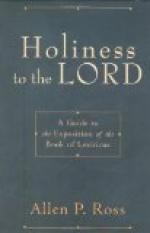As seen, nature and its laws would appear to us very different from what we find them now, with our present time perception.
Thus philosophy, mathematics, and physical science agree that space and time cannot be entities, but are conceptions of the human mind in its relation to nature. But what does this mean, and what conclusions follow from it?
The space of our conception is three-dimensional—that is, extended in three directions. For instance, the north-south direction, the east-west direction, and the up-down direction. Any place or “point” in space thus is located, relative to some other point, by giving its three distances from the latter, in three (arbitrarily chosen) directions.
Time has only one dimension—that is, extends in one direction only, from the past to the future—and a moment or “point” in time thus is located, with reference to another point in time, by one time distance.
But there is a fundamental difference between our space conception and our time conception, in that we can pass through time only in one direction, from the past to the future, while we can pass through space in any direction, from north to south, as well as from south to north—that is, time is irreversible, flows uniformly in one direction, while space is reversible, can be traversed in any direction. This means that when we enter a thing in space, as a house, we can approach it, pass through it, leave it, come back to it, and the thing therefore appears permanent to us, and we know, even when we have left the house and do not see it any more, that it still exists, and that we can go back to it again and enter it. Not so with time. On approaching a thing in time, an event such as a human life, it extends from a point in time—birth—over a length of time—the life—to an end point in time—death—just as the house in space extends from a point in space—say the north wall—over a length of space—its extent—to an end point in space—say the south wall. But when we pass beyond the end point of an event in time—the death of a life—we cannot go back to the event any more; the event has ceased, ended, the life is extinct.




